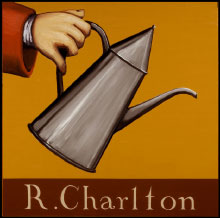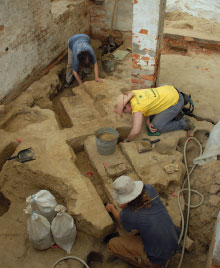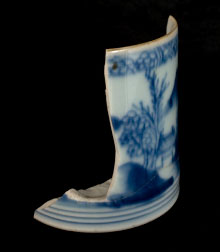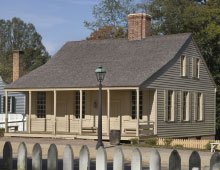
Charlton's Coffeehouse Reconstruction
Rebuilding an 18th-century Social Hotspot
Charlton's Coffeehouse was an 18th-century alternative to Williamsburg's many taverns. The establishment provided space for quiet conversation and scholarly debate. Perhaps more importantly, it provided its patrons a ring-side seat for events at the Capitol, next door. Colonial Williamsburg reconstructed the significant building in 2008–09.

A Collaborative Project
In November 1995 the Carey Peyton Armistead House, a familiar Williamsburg landmark, rumbled off down Duke of Gloucester Street on the back of a flatbed truck. Built in 1891, this yellow Victorian house occupied, for more than 100 years, the ravine-side lot where Richard Charlton operated a coffeehouse in the mid-18th century.
Reconstructing Charlton's Coffeehouse required the efforts of architectural historians, archaeologists, historians, and curators long before the first nail was driven. Among the most important clues to the building's 18th-century appearance was the foundation left behind after the Armistead House rolled off to its new location. Largely of 1750s construction, the foundation was a recycled remnant of the Coffeehouse's original fabric. A closer look at the Armistead House provided architectural historians with additional pieces of the Coffeehouse: more than 90 framing members, as well as rafters, an original window, and a door.

Archaeological Discoveries
Some architectural details came from the ground. Archaeologists successfully recovered evidence of the porch from which royal governor Francis Fauquier made a dramatic rescue of a Stamp Act official during a riot. When the search for a detached kitchen proved less successful, archaeologists removed a modern concrete floor in the Armistead basement, revealing a large area of scorched clay and brick rubble: the remains of a central chimney stack. Apparently, cooking at the Coffeehouse was done in a cellar kitchen to accommodate the property's tight physical constraints.
A backyard trash pit, yielding more than 70,000 artifacts, provided evidence for the contents of Charlton's cups and cabinets: fragments of wine bottle glass, stemmed wine glasses, tumblers, and tankards in addition to tea, coffee, and chocolate cups. Substantial food could be had at Charlton's establishment. More than 30,000 discarded animal bones represented meals of wild game, lamb, ham, and fancy "made dishes." The most surprising dietary evidence came in the form of butchered peacock bones—certainly a stretch for 21st-century palates.

The Coffeehouse property, though now fully reconstructed, continues to offer archaeologists opportunities to explore 18th-century landscape and topography. Moreover, analysis of the rich assemblage of artifacts, now numbering well over a million fragments, will fuel innovative research for years to come.
About Richard Charlton
A wigmaker by trade, Charlton appears to have continued this practice from the Coffeehouse, discarding broken wig curlers, bone combs, and ointment pots (presumably holding pomade) along with the kitchen trash. The income produced by washing and restyling wigs for patrons and local residents would have helped this coffeehouse proprietor to weather slack periods between April and October's busy "publick times."
